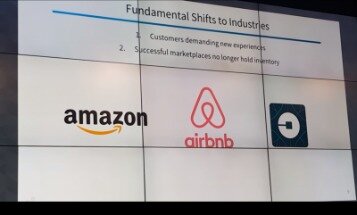The Dangers Of Investing In Cryptocurrencies
Content
“The impact on users of affected devices are clear in increased device wear and tear, reduced battery life and comparably slower performance.” In reality, most people will lose some of all of their investment in these types of schemes. Ponzi scams usually involve making strong or unrealistic claims about the returns you are able to make by investing in cryptocurrencies.
Another issue as the Bitcoin received is newly minted, is it’s not flagged when they sell Bitcoin to the markets, though it could have illegally been obtained. This week, Chinese police personnel arrested a Bitcoin mining gang that used $3 million worth of stolen electricity for their crypto mining operations. There were over 4,000 mining devices being used in this illegal operation and gang members would sell Bitcoin generated to fund their operation. 2A fiat currency is one that is established as legal tender by the government and controlled by it. Fiat currency is not backed by a physical commodity and the value of it is determined by supply and demand for that currency rather than the value of any material which the money is made of. Modern national currencies are fiat money as they are not legally convertible into gold or other precious metals. Cryptocurrencies instead have a built-in scarcity due to their source code which effectively limits the ultimate cumulative number of units which can be created.
Bitcoin Mining Keeps The Blockchain Secure And Rewards Miners With New Bitcoins In The Process
Nodes can also act as miners, meaning they will use cryptographic proofs of burned electricity to secure the network, for which they are rewarded with newly minted Bitcoin. Each user on the blockchain holds a copy of the distributed ledger on their computer (a “node”) and the data is synchronised and updated in real time on all nodes on the network. Each block is then linked like a chain back to the previous block using an encryption label with a cryptographic “hash” which takes data from the previous block and, by using advanced mathematical techniques, transforms it into a compact “string”. By means of this cryptographic hash function, each block on the chain confirms the validity of the previous one. A blockchain is a type of database using what is called “distributed ledger technology” . The blockchain is a “public ledger” meaning that it can be viewed by all parties participating on that blockchain and contains a chronological, time-stamped record of transactions. Both terms are very closely related because blockchain is the technology used to authenticate and record transactions in cryptocurrencies of which Bitcoin is the best-known example.
- When I ask what he’ll do until then, he says it is not a convenient time to discuss that.
- Many of these were fraudulent, including, it turned out, the very first ICO in China, in 2012.
- The dotcom bubble burst and took with it a tech-utopian ideal that the internet could be a decentralised, global space.
- Bitcoin miners therefore gravitate to where electricity is cheapest, meaning the fundamental issue is not with bitcoin but with a lack of cheap renewable energy production.
In fact, as per a 2020 survey by HSB, 36% of small-medium businesses in the US now accept Bitcoin. Bitcoin mining programs compute an encryption function called a hash on a set of random numbers. Coins are awarded to whichever miner happens to compute a number below a certain threshold. Since Bitcoin is not a physical currency, but a virtual one, it also needs to be held in a digital wallet, which can be be a hot wallet or a cold wallet.
How Much You Can Earn From Mining Bitcoins
Many other cryptocurrencies have just died because of lack of interest, and the simple fact that no one used them. Non-Bitcoin cryptocurrencies are collectively known as altcoins and they are more or less based on the same idea of a decentralized digital medium for exchange. Since the success of Bitcoin, there have been over 8,000 other virtual currencies introduced with varying degrees of success and popularity such as Ethereum, Litecoin, Monero and Dash. The idea is that you use cryptography to control the creation and transfer of money, rather than relying on central authorities.
No doubt if the NDRC does decide to rid China of crypto-mining, then the miners will just go elsewhere. The miners remaining in the industry, those with access to a power source or an inherent belief in the market, though, are holding steady and praying that the NDRC directive doesn’t imminently shutter their business. My friend Xiaomi Gezi who I met at a crypto-Monday meetup in Chengdu, helped me meet some of the miners I interviewed for this story. Later, when I asked if he wanted to share a taxi home, he told me he’d relocated far beyond the final ring-road in Chengdu, to a dormitory suburb two hours away by train and bus that was technically in another city. Even today, with exchanges shuttered and ICOs banned, there are still thousands of bitcoin and crypto-groups on WeChat, all with their membership full sending out information of new coins and OTC options and the best VPNs or most exciting mining operations. It is virtually impossible to verify any of the information shot rapid-fire across these groups.
However, the more established Bitcoin and other cryptocurrencies become in the future, the more retailers and businesses will be willing to accept it as a legitimate currency. Cryptocurrencies are facing increasing regulatory threats and with continually fluctuating prices they do come with a high level of risk for investors. There are literally hundreds of different cryptocurrencies available, and all have different values. Think of them as a type of unregulated digital money although most are not particularly easy to spend, and all carry a high level of risk. Given the rise in popularity of cryptocurrency, it is quite likely that HMRC will be clamping down on earnings stemming from the virtual currencies.
Bitcoin Mining: Can I Make Money Doing It?
But, it opposes the University Policy that speaks against the use of U-M resources for commercial or personal use. However, it is crucial to mention that ASIC Mining receives a lot of criticism because it knocks off all the mining opportunities for GPU and CPU miners. It is one of the most effective mining techniques due to its very wide capability of producing cryptocurrencies in huge amounts.
The law allocated 600 MWh of subsidised energy to be used for authorised cryptocurrency mining. The process consumes large amounts of electricity and mining at scale only makes economic sense where energy is cheaply available. Apart from this, miners have been receiving a lot more cryptocurrency-based credit for verifying the authenticity of bitcoin transactions online. Competitive cryptocurrency mining generally revolves around continuing Mining without stealing electricity. One shall always prefer to make money via legal methods of cryptocurrency mining. One of the crucial parts of the cryptocurrency mining rig’s building process is setting up all the frame components. In 2021, it has been a decade that people worldwide are practicing cryptocurrency mining.
Also, keep in mind that you should know and explore the best places to buy and sell cryptocurrency all the time to be aware of the exchange rates and not to have financial loss. Similarly, other tech-based platforms reward blockchain builders who complete all verified transaction blocks. Similarly, cryptocurrency mining is a type of digital Mining where a miner completes several tasks. Several questions sprained their minds to overthink risks, pros, and cons for the fresh cryptocurrency miners. So let’s explore some basic information on cryptocurrency mining to get ready for earning crypto money in the future. Therefore, the general public doesn’t hold the financial power and stability to buy cryptocurrency. It permits interested individuals to complete tasks online and receive rewards in the form of cryptocurrency like bitcoin.
ASIC microchips were developed to process the computations faster and have become necessary to succeed at mining today. These chips can cost £2,000 or more and are guaranteed to further increase in cost with each improvement and update. Similar to FPGAs, application-specific integrated circuits are chips designed for a specific purpose, in our case mining Bitcoin, and nothing else. ASICs for Bitcoin were introduced in 2013 and, as of November 2017, they are the best processors available for mining Bitcoin and they outperform FPGAs in power consumption. A graphics processing unit is a powerful processor whose sole purpose is to assist your computer’s graphics card in rendering 3D graphics. GPUs are not built for executive decisions but to be very good labourers, hence GPUs are able to execute over 800 times more instructions in the same amount of time as a CPU.
What happens when all Bitcoins are mined?
When all bitcoin has been mined, the miners will no longer receive block rewards since there are no more coins to be generated. They will only earn from the transaction fees to be collected from every confirmed transaction. Miners can continue securing the network since they will still earn from the said fees.
“Two of these bitcoin farms have been identified, with a consumption of one megawatt,” Arash Navab, an electricity official, told state television. All these factors are significant barriers which are diminishing Bitcoin’s chances of becoming a more widespread and popular currency. Major economies such as India are even mulling banning cryptocurrencies altogether, which will further have a negative impact on the virtual currency that is largely driven by sentiment. The value of a Bitcoin fluctuates dramatically and because there are no controls there is nothing to stop money vanishing if the price tanks. “What Bitcoin needs to achieve is wider acceptance as a means of payment as an exchange mechanism,” says Legdonvirta. “Until it does that, this kind of value driven up by people hoping to stash their money in a safe place from the tax man is not sustainable.” But with too many people looking to make a quick buck, a bubble burst has seemed imminent.
Although the abuse risks ruining this nascent technology before most people have even heard of it, industry watchers believe that CPU mining could actually work as a web currency. With advertising revenue increasingly hard to come by due to the dominance of Google and the increased use of ad-blockers, mining could provide an alternative revenue stream. However, people have been increasingly buying cryptocurrencies for the purposes of investment, hoping to make a lot of money quickly. Bitcoins and cryptocurrencies are created through a process called mining. Anyone can mine for most cryptocurrencies, but it is a difficult and time-consuming process.
Warning On Cryptocurrencies
The amount of energy bitcoin’s network consumes did not rise to serious prominence until 2017, when a major price rally drastically pushed up its energy needs to the level of a small country. As the market cooled off in the years following, so did the energy demands, but the latest all-time high hit this week is more than double that of three and a half years ago. Analysis by the University of Cambridge suggests the bitcoin network uses more than 121 terawatt-hours annually, which would rank it in the top 30 electricity consumers worldwide if it were a country. The rise of Bitcoin and other ‘crypto-assets’ has prompted hackers to ‘hijack’ people’s browsers and use their computational power, security experts have warned.
How does Bitcoin mining work for dummies?
Bitcoin mining actually means adding more bitcoins to the digital currency ecosystem. All the additional bitcoins have to be generated through a computational process called mining. You do it by letting your computer hardware calculate complex mathematical equations, which can be done at any given time of the day.
Mining cryptocurrencies like Bitcoin involves connecting computers – usually specialised “mining machines” – to the currency network via the internet. Bitcoin payment processors, such as CoinsPaid offer a way of getting around this problem, as they convert the transaction to hard currency almost instantaneously. Many companies want regulation to provide them with some security and protect them from potential big losses on the cryptocurrency. Public blockchains – individual blockchains exist for the various cryptocurrencies such as Bitcoin, Ethereum or Litecoin. A cryptocurrency essentially consists of transactions recorded in a database and which, once accepted by the network, cannot be modified or deleted without satisfying specific conditions. These conditions involve verifying the authenticity and then giving approval to the new transaction by the peer to peer group or network participating in what is referred to as the “blockchain”.
SHA-256, the mining algorithm used by Bitcoin, is a one-way cryptographic algorithm. When you pass a word through SHA-256, you will be given back an unrecognisable string of letters and numbers called a “HASH”. As such, even if a cloud mining contract looks like it will be profitable, you’re still more likely to lose more than you earn. The reason it moves back is because Bitcoin mining difficulty tends to rise over time, especially as Bitcoin prices do. This means the amount of Bitcoin you get from cloud mining will usually decrease over time, which pushes back the break-even point. Bitcoin mining difficulty will usually only drop if Bitcoin prices do, but if that happens then your Bitcoin is worth less, which also pushes back the break-even point.
Wash trades, where people involved in a certain cryptocurrency trade among themselves to create the impression of volume and interest, are rife, and substantively no different from pump-and-dump schemes illegal in regulated non-crypto markets. Sichuan has over6,600 dams and the provincial government had to actively ban the construction of more small-scale dams constructed specifically for bitcoin mining. rom the US, to Canada, to Europe and China, critics have often argued that crypto is an environmental disaster, offering statistics such the one showing that, in 2017, bitcoin mining worldwide used as much power as the nation of Denmark. This is true, but it is also true that in 2016 the province of Yunnan, in China’s Southwest, wasted 32 billion kWH of power – roughly equivalent to the power consumption in Denmark for that year. China has 70 per cent of the world’s crypto-mining capacity, and over 70 per cent of that capacity is nestled in the mountains of Sichuan, where abundant hydroelectric power makes the price per kilowatt some of the cheapest anywhere in the world. Mining bosses in China are making their millions in a legal grey area – and a new directive issued last week by the The National Development and Reform Commission hints that cryptocurrency mining may soon be outlawed altogether.
Firstly, to buy and store a cryptocurrency is quite technically demanding and it’s very easy for things to go wrong. The lack of regulation and central authority means that seeking compensation or making complaints is also very difficult. The instability of cryptocurrencies does means that it’s possible to make huge gains with small amounts of investments. But it’s also possible to make huge losses in a relatively short space of time. But because of the anonymity of the transactions, they are also frequently used by criminals seeking to avoid detection for unlawful activities. There are many legitimate reasons to use cryptocurrency in place of everyday currencies like British Pounds – it’s secure, cheap and fast and offers genuine technical innovations that many believe will one day replace more traditional forms of exchange. So, if you’re looking to buy or invest in Bitcoin or other types of cryptocurrency, you’ll have limited legal protection and a high risk of losing some or all of your capital.
However, for now, the above guidelines are how your earnings, whether they are made through mining or buying, will be taxed for the foreseeable future. Mining has been bandied about throughout 2017 when cryptocurrency comes up in conversation but few truly understand what it actually is, or how it affects your tax position. Bitcoin’s environmental impact is exacerbated by the fact that a majority of miners are based in China, where over two thirds of power is from coal. “Bitcoin’s carbon footprint will get exponentially worse because the more its price rises, the more competition there is for the currency and thus the more energy it consumes.”
The Chinese central bank introduced its own digital currency and electronic payment system to four cities to test it. This is a historic milestone in the country’s broader adoption of the block chain system.
Since Bitcoin is open source, anyone can develop their own cryptocurrency using the same technology. In 2018 ordinary miners were doing business at a loss when Bitcoin hit its annual low and the breakeven cost was at $3,550. They were then incentivised to refrain from selling Bitcoin and hold onto it till the price increased or cease their mining operation.
Palo Alto Networks’ Intelligence Centre has outlined how hackers are abusing a browser-mining service named Coinhiveby injecting the application’s JavaScript code into legitimate sites, which then uses visitors’ CPU time to mine currency. But when DIGIT reached out to leaders in crypto-currency security, we were told that the development was to be expected. Bitcoin is not controlled by any central organisation, bank or government.
The skeleton crews in these facilities spend their days playing online games and watching live-streams, rotating those on duty who search for scattered red lights among a neon-green sea. However, inspections by provincial governments have increased, particularly in Inner Mongolia and Xinjiang, where mining rigs have been seized and operations closed down. Ordos, Inner Mongolia’s provincial capital – which includes the infamous ghost city Kangbashi within its administrative purview – offered bitcoin miners preferential rates for power. Bitmain, the mining equipment provider valued at over $10 billion, was offered prices as low as $0.04 per Kilowatt hour. This rate was 30 per cent lower than that typically paid by firms in the area. Just 200km away from Bitmain’s main facility, in the outskirts of Ordos, lay Haerwusu, China’s largest open-pit mine. With exchanges and ICOs already shuttered completely, and no legal way to convert cryptocurrencies into Chinese yuan, mining is the last remaining pillar propping up this intangible edifice.












